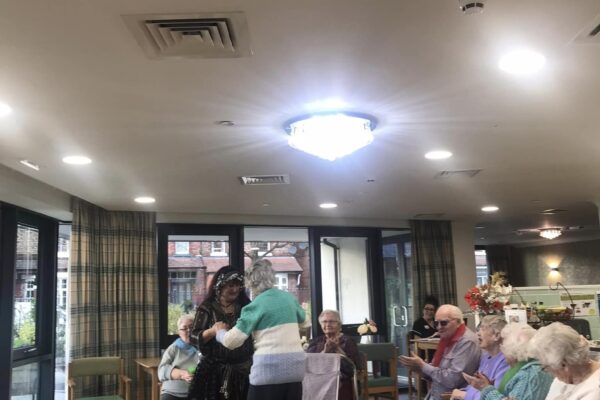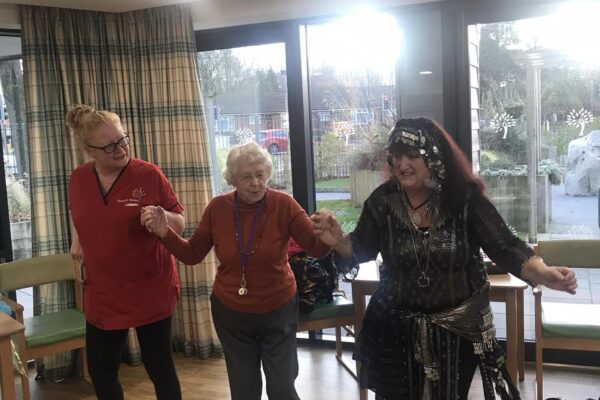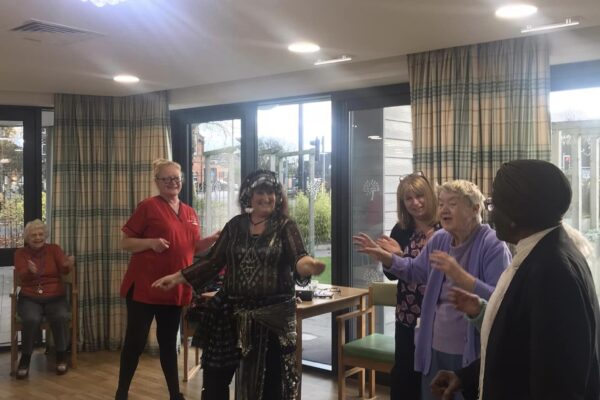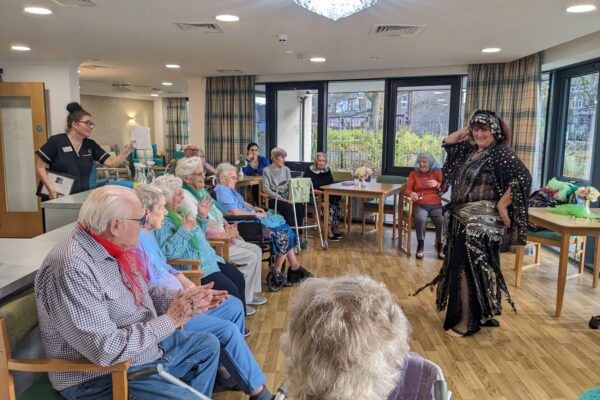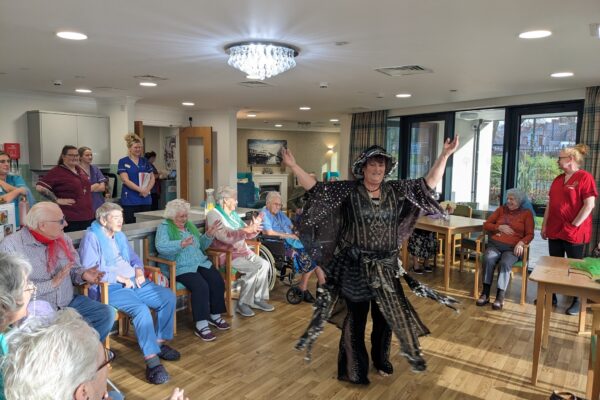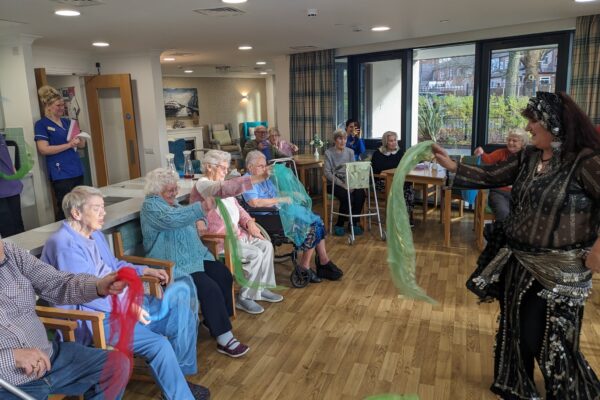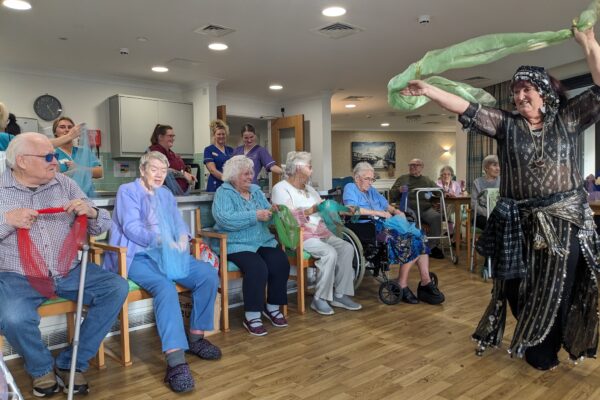A first for Bowfell House and a real highlight this week was our amazing showcase, belly dancing lesson and learning all about the history and culture surrounding the dance and costumes from an fantastic local lady.
Described by some as the oldest dance in the world, belly dancing is said to date back at least to the time of Alexander the Great (356-323 B.C.). Some say its roots lie in fertility rituals of ancient Egypt and Greece. Others say it was brought from India to the Middle East by Roma (Gypsies) who also developed flamenco from it in Morocco and Spain. Examples of dances similar to belly dancing can be seen in ancient Egyptian tomb paintings.
Belly dancing history crosses many cultural boundaries, getting its start in the Middle East and Africa, and moving on to evolve in western cultures as both a form of cultural dance and exotic entertainment. In the 21st century, the genre has gained considerable popularity all around the world.
Early belly dancing costuming consisted of a fitted bra top, a belt that rides low on the hips, and then a long skirt or flowing pants. These are usually covered in embellishments of fringe, coins, jewels, or sequins. This historical look, first portrayed on the earliest of belly dancers, is often still used today.

